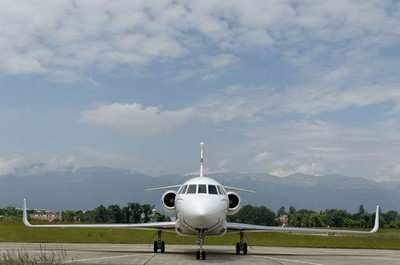Thu, Jan 19, 2012
API Claims Significant Fuel Savings For Business, Commercial
Aircraft
As of 1456 PST on Sunday, January 15, 2012, the patented Blended
Winglet Technology developed by Aviation Partners Inc. has saved
the worlds' commercial and business aircraft operators an estimated
three billion gallons of jet fuel, according to a company news
release. This represents a global reduction in CO2 emissions of
more than 32.2 million tons. Aviation Partners' Winglets are now
flying on more than 5,000 individual airplanes, and more than 20
airplane types worldwide.

API's Blended Winglets are an addition to the airplane wing tip
that efficiently adds effective wingspan. The Winglets reduce the
drag caused by wingtip vortices, the twin tornados formed by the
difference between the pressure on the upper surface of an
airplane's wing and that on the lower surface. By reducing drag,
Blended Winglets, increase fuel efficiency and boost range. The
Blended Winglets, which feature a large radius and smooth chord
variation in the wing-to-winglet transition area, have demonstrated
more than 60% greater effectiveness over conventional winglets with
an angular transition.
One of the unique features of API's technology is that it can be
installed during production or retrofitted to existing (i.e.
in-service) aircraft. API has Blended Winglets certified and in
service on the Gulfstream II, Hawker 800 series, Falcon 2000 series
and Falcon 900 series aircraft. API's joint venture with The Boeing
Company, Aviation Partners Boeing (APB), has Blended Winglets
certified and in-service on the Boeing 737-300, -500, -700, -800
& -900, 757-200 & -300 and 767-300ER/F series aircraft.
Both companies have additional airframe development programs
in-work for Blended Winglets, and API is looking at radical new
Winglet technologies for the future.
API expects the amount of fuel saved to grow exponentially to
more than seven billion gallons in the next 4-5 years. Joe Clark,
CEO of API and Chairman of APB, said, "We are proud to be the world
leader in the field of fuel savings for the airlines and private
aviation," adding that, "We look forward to adapting our new
technology to both existing airplanes and new production designs in
the near future."
More News
He Attempted To Restart The Engine Three Times. On The Third Restart Attempt, He Noticed That Flames Were Coming Out From The Right Wing Near The Fuel Cap Analysis: The pilot repor>[...]
Make Sure You NEVER Miss A New Story From Aero-News Network Do you ever feel like you never see posts from a certain person or page on Facebook or Instagram? Here’s how you c>[...]
From 2009 (YouTube Edition): Leading Air Show Performers Give Their Best Advice for Newcomers On December 6th through December 9th, the Paris Las Vegas Hotel hosted over 1,500 air >[...]
Aero Linx: NASA ASRS ASRS captures confidential reports, analyzes the resulting aviation safety data, and disseminates vital information to the aviation community. The ASRS is an i>[...]
“For our inaugural Pylon Racing Seminar in Roswell, we were thrilled to certify 60 pilots across our six closed-course pylon race classes. Not only did this year’s PRS >[...]
 NTSB Final Report: Rutan Long-EZ
NTSB Final Report: Rutan Long-EZ ANN FAQ: Turn On Post Notifications
ANN FAQ: Turn On Post Notifications Classic Aero-TV: ICAS Perspectives - Advice for New Air Show Performers
Classic Aero-TV: ICAS Perspectives - Advice for New Air Show Performers ANN's Daily Aero-Linx (06.28.25)
ANN's Daily Aero-Linx (06.28.25) Aero-News: Quote of the Day (06.28.25)
Aero-News: Quote of the Day (06.28.25)



